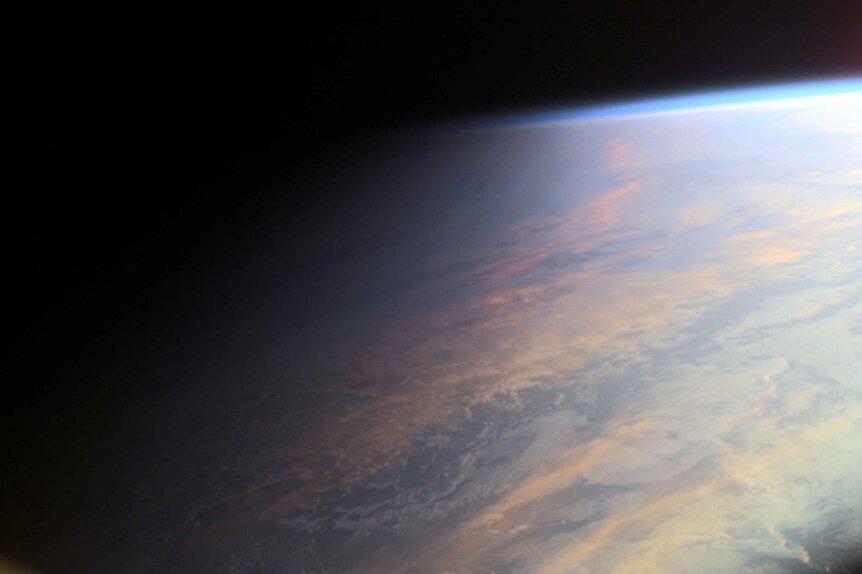Create a free profile to get unlimited access to exclusive videos, sweepstakes, and more!
Life could exist in 'terminator zones' of tidally locked planets
Metal!

In SYFY’s ongoing deep space adventure The Ark (airing every Wednesday on SYFY, then streaming the next day on Peacock), a crew of astronauts board the last life boat off of Earth and embark upon a one way trip to another world. Their target is Proxima Centauri b, the closest exoplanet orbiting a star 4.2 light years away. It makes a certain amount of sense as a secondary home. It’s certainly closer than any other star system, and Proxima b lies within its parent star’s habitable zone. That’s not to say, however, that living there would necessarily be fun.
Because Proxima Centauri is so much less massive than the Sun, and therefore cooler and less luminous, its habitable zone is much nearer than we’re used to. The planet orbits at a distance only about 5% of the distance from the Earth to the Sun. As a result, its orbital period is blisteringly fast. It circles its star every 11.2 Earth days, meaning any first-generation Proxima Centaurians would have a birthday every week and a half. Worse for any enterprising adventurers with a ticket to PCb, it’s believed that the planet is tidally locked to its star in the same way the Moon is tidally locked with the Earth. That means one side of the planet always faces the star and the other side always faces away.
RELATED: 'The Ark's Dean Devlin & Jonathan Glassner on their passion to build optimistic sci-fi worlds
Planets like that tend to have one side playing a perpetual game of the floor is lava while the other half of the planet is trapped in an endless match of freeze tag. On Proxima Centauri b and other tidally locked worlds, everyone plays the planets’ wacky games, and everyone loses.
A strange game. The only winning move is not to play.” – Joshua, WarGames.”
If you want to win the game of life on a tidally locked world, your only shot might be to exist within the space between scorching hot and freezing cold. That neutral zone between hemispheres could, according to a recent paper in The Astrophysical Journal, provide a thin circumglobal oasis where life might emerge.
This dividing line between night and day is known as the terminator zone. On Earth, the terminator is constantly moving as a consequence of the planet’s rotation, but on tidally locked planets it stays more or less in the same place. That doesn’t mean, however, that there is a distinct line between night and day, a sort of extraterrestrial International Date Line you could stand on either side of. Instead, there is a gradual transition from night to day in which the amount of light hitting the planet slowly drops off until it is indistinguishable from total darkness. That transition space could allow for a sweet spot somewhere in the middle where temperatures are mild, liquid water can exist, and life can develop.
It's not an ideal setting for life, but it does have some benefits. Because red dwarf stars are less massive than the Sun, they burn through their fuel more slowly. While our Sun has an estimated lifespan of about 10 billion years (nearly half of which has already elapsed) Proxima Centauri has an estimated lifespan of four trillion years. That’s a lot of time for any life on Proxima Centauri b to get its act together.
RELATED: What's next after that coup? 'The Ark' writer dives into Trust's treachery in latest SYFY episode
Researchers used climate modeling software typically used to model the Earth in order to determine if tidally locked exoplanets could sustain a habitable climate around the terminator zone. Their findings suggest that it is possible, but some tidally locked worlds might be better at holding onto their water than others. Counterintuitively, scientists found that worlds with a lot of water to start with have a lower chance of being habitable down the line.
If a planet has too much water, then the water facing the star boils off and covers the entire planet in a thick haze of water vapor. That’s no good. If there’s more land, breaking up the water, particularly on the day side, then that doesn’t happen and the area within the terminator can reach an equilibrium which could be habitable.
Not only does that extend the number of worlds future explorers could feasibly visit, but it also expands the number and type of worlds we should investigate for signs of alien life. It also means we might have to figure out new ways to look at certain worlds. If life signs do exist on a tidally locked world, they may only exist along that narrow band. That could mean we might only detect that life if we take the planet’s mugshot from the right side.
Bend all of your happy thoughts toward the crew of the Ark One. Even if they make it to Proxima Centauri b, they’re going to need all the help they can get. New episodes of The Ark air every Wednesday at 10 p.m. ET. on SYFY, then stream the next day on Peacock!































